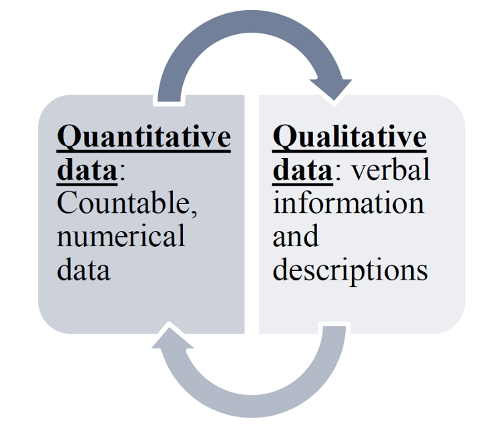What type of data should be collected?

One of the most important concepts in data collection is gathering mixed methods data for triangulation and interpretation of findings. It is most beneficial to collect both qualitative and quantitative data during the evaluation so these data sources can be used in conjunction to develop a clear and accurate answer to the evaluation questions. Quantitative data refers to numbers and qualitative data refers to non-numeric data such as stories, short written responses and expressions made by the participants/staff. There are strengths and weaknesses associated with both quantitative data and qualitative information. For example, quantitative data generally provides strong evidence for program accountability purposes. However, quantitative data is less sensitive to the unique experiences and voices of participants. Qualitative data is useful in revealing information about unintended benefits or consequences of program participation, as well as providing insight into program strengths, weaknesses or explanations for success. The quality of evaluation can be improved by combining both quantitative data and qualitative information to complement each other. Use of numerical data coupled with success stories is often considered one of the best methods for documenting educational program impact.